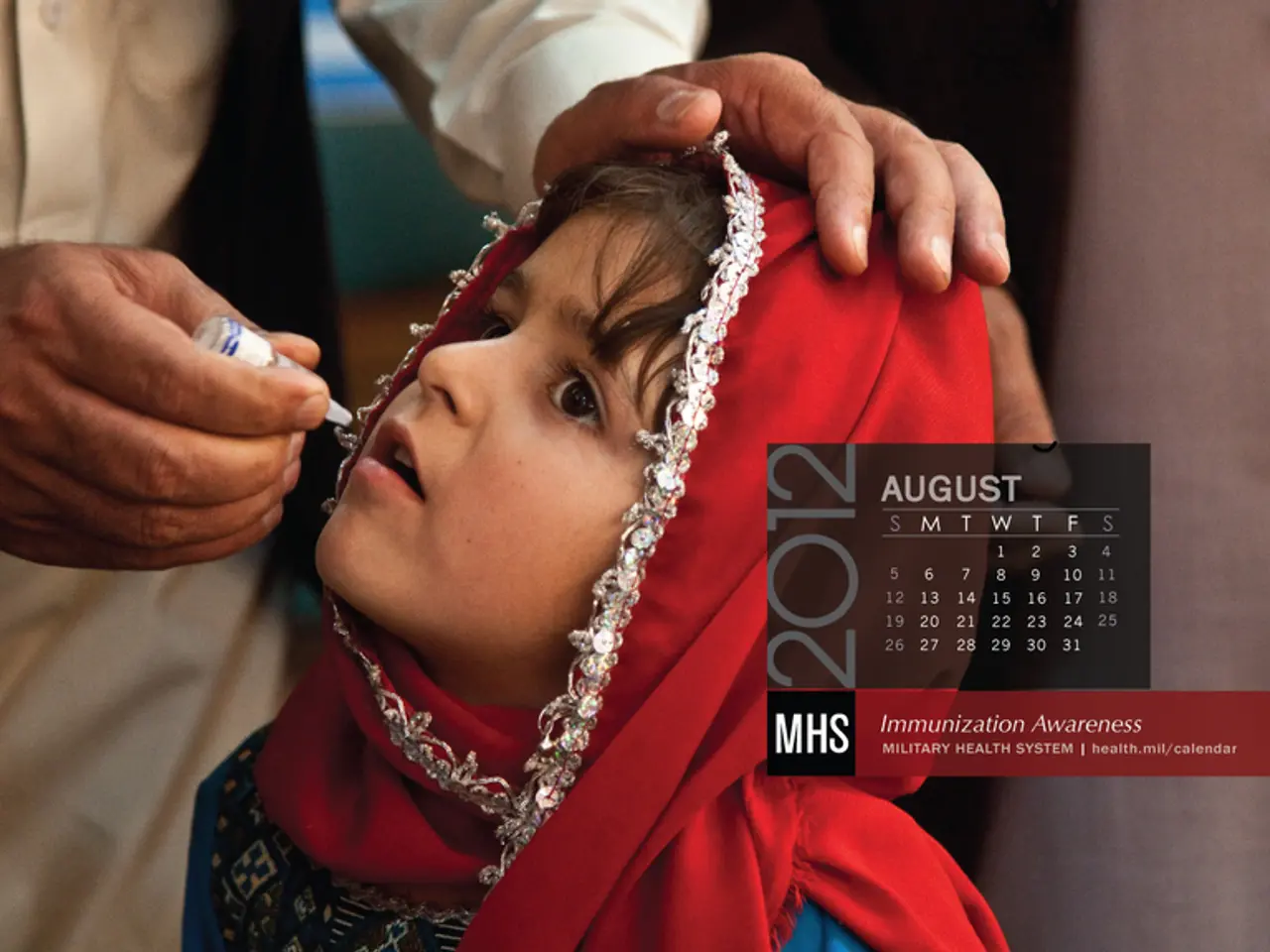Spread and Timeframe of Respiratory Syncytial Virus (RSV)
Respiratory Syncytial Virus (RSV) is a common respiratory virus that primarily spreads through respiratory droplets and direct contact with infected individuals. It can also survive on surfaces for approximately 4 to 7 hours, emphasising the importance of hygiene measures to reduce its spread.
RSV can live on hard surfaces such as tables or doorknobs for several hours, and on soft surfaces like tissues for up to 45 minutes. Transmission occurs through inhalation of respiratory droplets, direct contact with contaminated secretions or fomites, and touching contaminated surfaces and then the face, especially the eyes, nose, or mouth.
Symptoms of RSV infection typically start an average of 4-5 days after contact with the virus and include fever, runny nose, congestion, sneezing, sore throat, and cough. In high-risk infants and older adults, RSV can lead to more serious conditions such as bronchiolitis and pneumonia, causing additional symptoms like difficult, short, or fast breathing, wheezing, and bluish skin (not visible on darker skin tones).
To prevent the transmission of RSV, it is recommended to cover coughs and sneezes with a tissue or shirt, wash hands often, avoid close contact with sick people, disinfect high-touch surfaces, stay home while sick, avoid crowds during fall and winter, and seek medical care if experiencing difficulty breathing or worsening symptoms.
High-risk infants may require longer stays and admission to the intensive care unit (ICU) if they contract RSV. In severe cases, a person may receive IV fluids, oxygen, or mechanical ventilation to help them breathe. To prevent cases of RSV in high-risk infants, a doctor may administer an antiviral drug called palivizumab via a monthly intramuscular injection during the RSV season.
RSV can cause mild symptoms similar to a common cold, but it can be serious and require hospitalization in certain populations, including infants, toddlers, adults over 65 years, and people with weakened immune systems. In the United States, RSV causes hospitalizations in children aged 5 years or younger and hospitalizations in older adults. RSV is particularly common among children, with nearly all contracting it by the age of 2 years.
The virus rapidly spreads into the respiratory tract after encounter, and the incubation period ranges from 2 to 8 days, with an average of 4-6 days. Symptoms often worsen before they improve and peak between days 4 and 6. It can take 1-2 weeks for symptoms to fully improve, with a cough persisting for about 4 weeks.
There are several vaccines approved by the Food and Drug Administration (FDA) to help prevent RSV in adults and children. Recommendations for who can receive the vaccines are based on age and other risk factors. It is crucial to consult a healthcare provider for advice on vaccination and prevention strategies.
- Other immunodeficiency disorders and chronic diseases, such as asthma and heart conditions, can also make children more susceptible to serious RSV infections.
- Science continues to advance in the field of RSV research, with companies like Pfizer developing potential treatments and vaccines for these respiratory conditions.
- As we age and our immune systems weaken, we become more vulnerable to other respiratory infections, as well as RSV, which can lead to health complications like pneumonia.
- It's important to prioritize health and wellness by adhering to hygiene measures, as RSV can survive on surfaces for several hours and spread to others.
- Medical-conditions like RSV, along with other immunodeficiency disorders, can significantly impact children's health and necessitate ongoing medical care.
- Beyond RSV, there are numerous other respiratory conditions that can have a lifelong impact on children's and older adults' quality of life, making ongoing research in science crucial to improve preventative measures and treatments.




